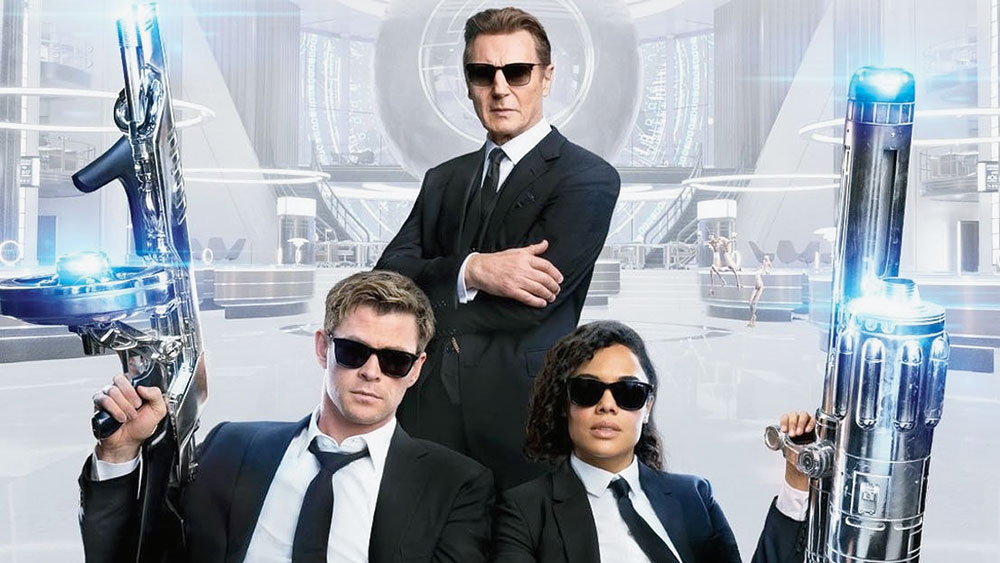The usual slimy, strange and tentacled creatures slither and galumph through Men in Black: International. Some are cute — like the itty-bitty being voiced by Kumail Nanjiani — but some look like leftovers from other fantasy franchises. The critters mingling with humans at Men-in-Black HQ could be on hiatus from the Star Wars movies, while a ferocious extraterrestrial suggests a prototype from the Alien series. Nearly everything here reminds you of something else, often better, cleverer, funnier.
The whole shebang is relatively painless (“Innocuous!” would be my pull quote), a sadly low bar given summer’s already low cinematic expectations. The first Men in Black was released in July 1997 and, with Barry Sonnenfeld directing, quickly took off with its bright, fizzy nonsense and its cannily paired leads, Will Smith and Tommy Lee Jones. Two decades is a long time in the movie world, and the original stars, who were joined by Josh Brolin in the 2012 sequel, have been replaced by Chris Hemsworth and Tessa Thompson, with Liam Neeson now furrowing brows on backup.
All three are nice to spend time with, so that’s something. Disposability has always been a draw of this series, which is high concept enough to support sequels, but generic enough that its parts don’t register individually. A poster for the 1997 film laid out the premise with pictorial obviousness (big guns, a starry sky, sharply dressed men in dark glasses), while the tagline telegraphed the cheeky and breezy violence: “Protecting the earth from the scum of the universe.” The movie was light, silly fun; the stakes were low, the actors charming. By far the most amusing bit was the neuralyser, the tool the men in black use to erase the memories of witnesses, a service that this franchise has effortlessly managed on its own.
The latest edition offers more of the same but with some modifications, none interesting. There are agents, guns, extraterrestrials, special effects, pop-cultural nods and a lot of overt tiptoeing around politics. The most obvious and belaboured difference is the presence of women, most notably Thompson, who shares star billing with Hemsworth. It’s easy to be cynical about her casting (trust me), but it is good to see her making bank instead of some Hollywood dude du jour. That said, it’s exasperating (yet predictable) that the movie makes such a great, groaning fuss over the fact that women are onboard, a self-consciousness that reads like self-congratulation.
F. Gary Gray can be a fine action director and sometimes better than fine, but the scenes that should pop and pow — given the squealing tires, bared knuckles and laser beams — consistently fall flat. He doesn’t seem engaged in the material, which is understandable, though if you’re not going to take on aliens as metaphor in 2019 it’s hard to know why anyone would bother. Surely there are other studio checks to cash. About the only time Gray perks up are in the scenes with the French performers known as Les Twins, whose beauty and sensuous elasticity prove more eye-opening than any special effect or even Hemsworth’s regularly — and, doubtless, contractually — bared chest.
To be fair (really), the script by Art Marcum and Matt Holloway gives Gray and everyone else little to do, even as the story jumps around from New York to London to Marrakesh, racking up cliches with the miles. It says something about the entrenched studio mind-set that despite the bids to bring this series up to representational speed by casting Thompson (Emma Thompson shows up, too), this movie recycles one of the more noxious and durable Hollywood setups: the chase in which fun-loving Westerners race through a putatively exotic site overturning goods and scattering locals who are, of course, the most generic and disposable component of all.










